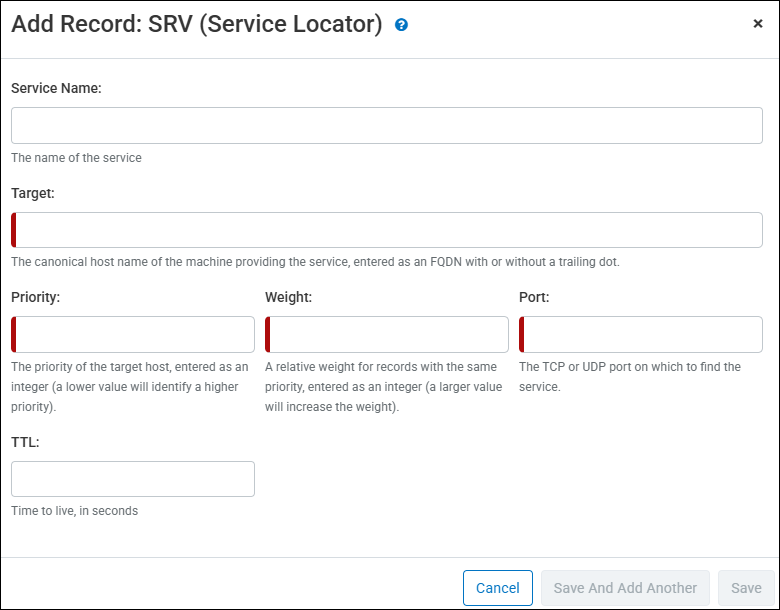SRV Records
A Service (SRV) Record provides information (the location, i.e. hostname and port number) about available network services (for example, SIP and XMPP) based on a specific protocol and domain.
An SRV record consists of the following fields:
-
Service Name - The name of the service, which is entered as a combination of the following three fields:
-
Service - the symbolic name of the desired service (with an underscore)
-
Protocol - the transport protocol (usually TCP or UDP) of the desired service (with an underscore)
-
Name - the domain name for the record (with or without the trailing dot)
-
For example: _sip._tls.example.biz
-
-
-
Target - The canonical host name of the machine providing the service, entered as an FQDN with or without a trailing dot. Examples include:
-
targetname.example.biz
-
targetname.example.biz.
-
-
Priority - The priority of the target host, entered as an integer. A lower value identifies a higher priority.
-
Weight - A relative weight for records with the same priority, entered as an integer. A larger value increases the weight.
-
Port - The Transmission Control Protocol (TCP) or User Datagram Protocol (UDP) port on which to find the service.
-
TTL - The Time to Live (TTL) for the record. You can provide this value as either an integer or an annotated value (1h = 1 hour).
-
This field is not required, and will be set to the default value if left empty.
-
Please note that when searching for SRV records, is not possible to search the records using “target”. These records can only be searched using the host name (also called owner name).
